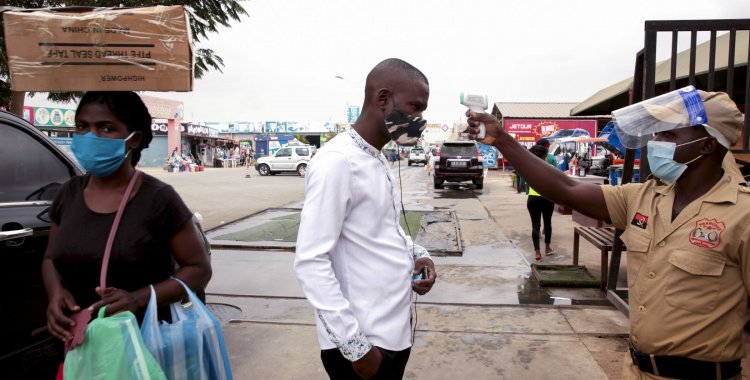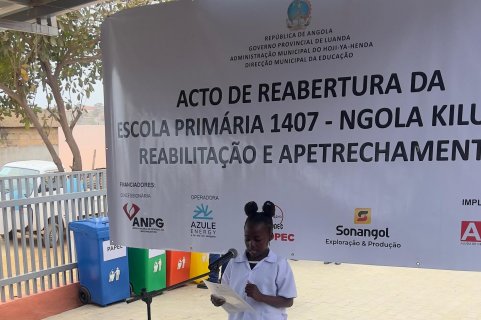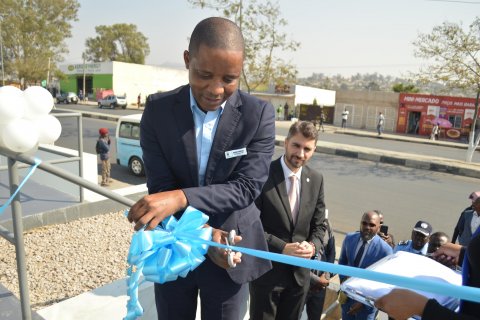Francisco Furtado was speaking at the press conference to present the new measures of the Presidential Decree on the situation of public calamity.
According to the governor, the daily increase of positive cases of covid-19 in the country is symptomatic, and the epidemiological evolution is worrying in some provinces along the national border, especially in Lunda Norte, Moxico and Cunene.
The leader stressed that the movement of populations in border areas with neighboring countries of the Democratic Republic of Congo, Zambia and Namibia, is enhancing the importation of the new coronavirus.
"And similarly the agglomerations of people in markets, collective transport stops and not using face mask has propitiated the contagion of the SARS-CoV-2 virus in the communities," he said.
In Luanda there is a slowdown of positive cases and an increase of those who recovered from the disease, however, continued Francisco Furtado, the recovery is also accompanied by an increase of new cases, particularly in the border provinces.
"This led the technical group of the multi-sector commission of the various analyses made to conclude that the sanitary fence of Luanda province will last during the month of August, aiming at solving certain issues, namely the increase of the vaccination process and also the increase of the border control and testing system in the most affected regions", he said.
In his turn, the Secretary of State for Public Health, Franco Mufinda stressed that the health fence in Luanda has contained the rampant transmission of the virus throughout the national territory, being the capital an important gateway, "which prevented the collapse of the national health system".
According to Franco Mufinda, although the number of confirmed cases has been decreasing in Luanda for four weeks, the trend of the epidemic curve is not stable, and there are still large chains of transmission, which maintain the community circulation of the virus.
With the aggravating factor that in 76 percent of these cases were confirmed the circulation of the South African, English, Indian and Brazilian variants, classified by the World Health Organization as of great concern, due to its high transmissibility, severity and ability to affect younger people.
"In Angola, the province of Luanda is still responsible for more than 70 percent of the cases, which occur throughout the country, so it is still a risk the dispersion of variants of SARS-CoV-2, which could accelerate the transmission and cause the worsening of the situation in provinces that currently have low transmission," he stressed.
Regarding the southern and eastern provinces, Franco Mufinda said that there is an increase of cases, which could cause in Luanda an accelerated increase of high magnitude cases, due to its population density, "with unpredictable consequences on the national health system and the country's economy".
Franco Mufinda stressed that vaccination is the most effective strategy to prevent the disease and normalize economic and social activities, but for that it is necessary to reach a coverage between 60 percent and 70 percent of the population, to ensure the so-called group immunity.
"Although the vaccine procurement process is challenging, the Angolan government is doing everything to mobilize in the coming days and months sufficient quantities of quality vaccines, to cover the provinces of higher risk group in which Luanda is no exception and thus we have an important tool to cut the transmission chains, avoiding serious cases and deaths, preserving the gains acquired so far," he said.
The governor said the management of the pandemic in the country, in the African and world context, is considered successful, because there is no record of collapse of the health system at any time, not even during the epidemic peaks that occurred in October 2020 and March this year.
"The permanence of the sanitary fence in Luanda, the post-disembarkation air and sea testing, the systematic testing at the land borders in Luanda province, and the mass vaccination, a priority in Luanda and in the high-risk provinces will surely contribute to the containment of the pandemic and the lifting of the sanitary fence in the short term," he said.







